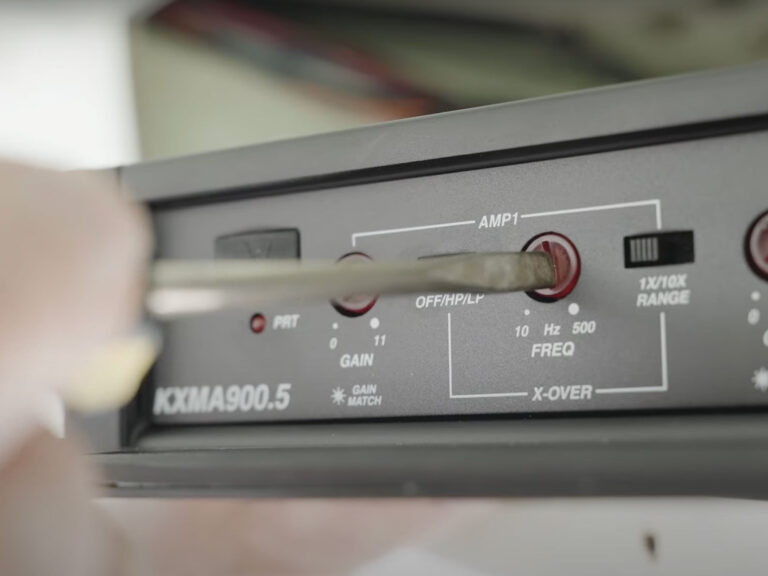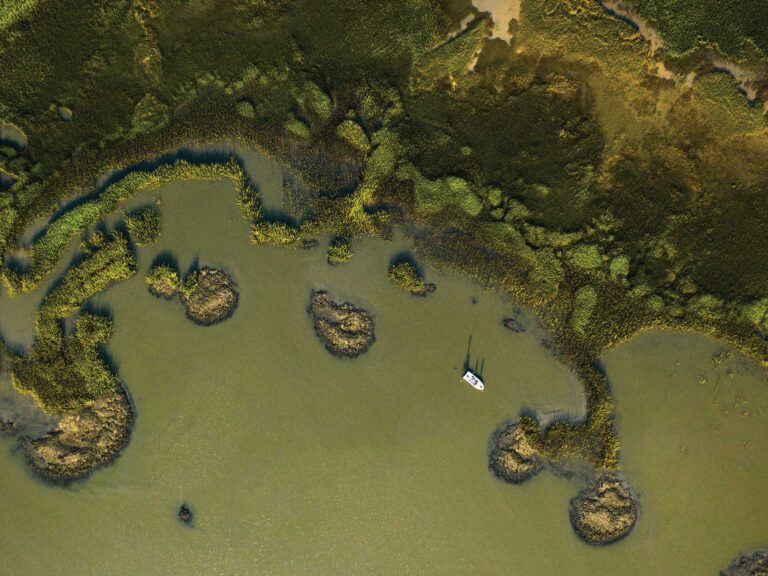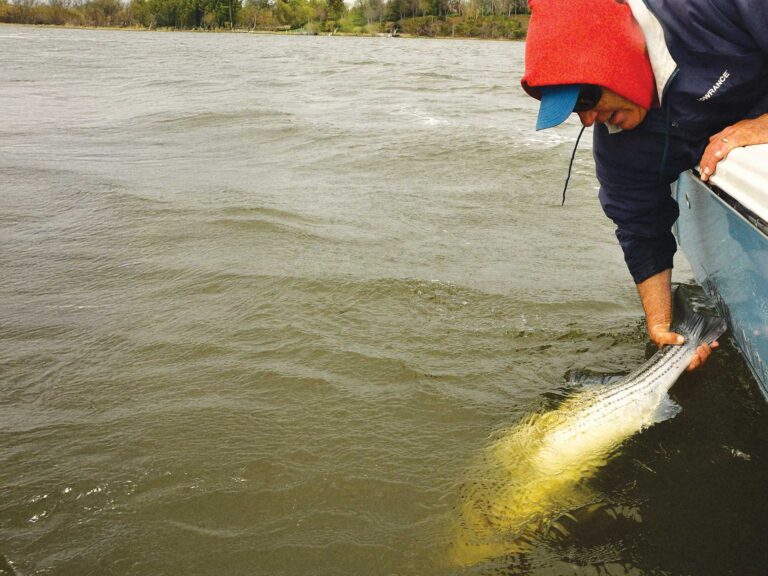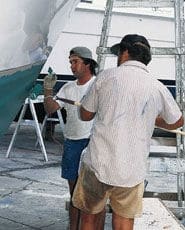
| If you don’t perform your own maintenance, it’s important to let the boatyard know which bottom paint to apply. |
Nobody likes to think about bottom paint, but everybody likes to think about his checkbook – or at least preserving its contents. Second to preserving fishing time, saving money – especially when it comes to boat maintenance – is something we’re all interested in. Even the guys who you’d think have better things to worry about than fuel consumption sit up and take notice when their choice of bottom paint can save them some serious bucks.
Case in point: When the J&T;, a 61-foot Viking, was delivered to Johnson & Towers, Inc. (the big marine diesel distributor in Baltimore), it sported a coat of standard Viking-issue ablative bottom paint. “We’d requested a different paint, but it just didn’t happen,” recalls J&T; skipper Dave Shinn. “They put on the paint they regularly use, the self-cleaning type.”
The J&T; fishes the Atlantic from New Jersey through the Caribbean each season, so water conditions and distances covered are extreme. The boat logs 1,500 hours a year.
“We left the original Micron CSC paint on, and we ran with that until it was time to repaint the bottom,” says Shinn. “Then we switched to the Interlux VC Offshore we had requested, the paint we were most used to.
“Once we switched to the hard paint, we noticed a big difference. Our speed stayed the same, but when we started comparing fuel logs from before the change to after we replaced the soft paint with hard paint, we discovered we had gone from 120 gallons an hour at cruise speed to 110 gallons an hour. And that’s not just on a single trip; it’s consistent with what we’ve recorded in our fuel logs over the past ten months we’ve been running with the VC Offshore.”
Return Investment
Granted, few of us run our boats 1,500 hours a year, or range as far and wide as the J&T; does. But all things are relative, and a nearly ten-percent savings on anything is worth paying some attention to. Look at it as return on investment.
Most of us who paint our own hulls, or who direct the boatyard to use a specific product, decided long ago which brand and type of bottom paint we like best, and we’ve pretty much stuck with it. But things change – water conditions, boat usage, even climate – and all of these variables have a lot to do with the type of paint that’s most efficient. Therefore, it pays to reassess from time to time the way you use your boat. Maybe you keep it in a different place than you did when you chose your paint originally. Maybe you’ve changed the species you most fish for or the amount of running you do. Maybe the quality of water you fish in has changed. The demands you make on your bottom paint can be as varied as the waters you fish and the species you seek.
While there are a number of bottom paints on the market from several major manufacturers, there are really only a limited number of choices you can make. Quite simply, there are “hard” paints and there are “soft” paints, each for a different purpose, and in those two categories there are weak, moderate and strong toxicity levels, which indicates the amount of the toxic ingredient, or biocide, that kills the things that want to live on the bottom of your boat. John Ludgate, vice president of sales and marketing for Pettit Marine Paint, explains some of the differences.
Ablative Vs. Hard
“There are two kinds of paint: ablative, which wears away by itself, and hard, which means the copper biocide leaches out and leaves the paint behind looking like Swiss cheese. At the end of 12 to 18 months you have to sand off this residue and apply a new layer of hard paint.”
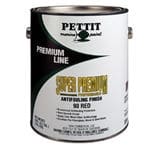
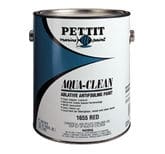
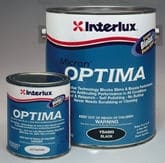
Marine bottom paint comes in different varieties, each designed for a specific application or location.|
Ablative paint requires less maintenance, says Ludgate. “You don’t have to sand it to apply more paint. Like a bar of soap, the whole thing removes itself at a controlled rate, taking the organisms with it.”
Why you would choose one over the other has to do with the way the boat is used, as well as the level of maintenance you are willing or unwilling to take on. Another consideration, says Ludgate, has to do with the characteristics of the paint itself.
“Trailered boats and dry-storage boats require special consideration. Once you take a hard paint out of the water, the copper oxidizes and loses its effectiveness. Then it has to be sanded and repainted before you put it back in the water. With an ablative paint you don’t have to do this.”
There are advantages to both kinds of paint, and perhaps the biggest factor in choosing between ablative and hard is how the boat is used. “For high-speed running you need hard paint,” explains Ludgate. “At speeds of over 25 or 30 knots, ablative paints dissolve much faster. Fishermen who want to run 43 knots out to the canyons prefer a harder, more durable paint that will hold up to the wear of high speeds.”
Another benefit of hard paint is its “scrubbability.” In Southern California and parts of Florida, bottom cleaning is done on a regular basis by divers with scrub brushes, and a hard paint is essential for this kind of treatment. “Other guys will put on an ablative paint, which doesn’t build up on the bottom, so a complete stripping job is seldom necessary,” says Ludgate. “Pettit sells more hard paint than ablative, because that’s what most people have traditionally used, but the trend these days is more towards ablative as people recognize the benefits of less maintenance.”
How Powerful?
Once you’ve established the way you use your boat, and thus the kind of paint you need, you’ll want to consider the strength of the biocides based on the type and ferocity of bottom-fouling organisms that live in your area.
Jim Seidel, the assistant marketing manager for Interlux, explains a systematic approach to reviewing your particular needs. “Geography is a major consideration,” he says. “Different climates support different organisms, which require different paints. Florida is different than Maine. Tropical waters are much tougher on anti-fouling paint than are cold northern waters. In the tropics you need something that is a little more powerful and will hold up a little longer.”
Water type can vary within the same general locale, too. “Here in New Jersey, inshore and offshore are not the same,” says Seidel. “Some bays will be different, too. For example, the eastern side of the bay may be more salty, so on that side you’ll have more animal fouling, while on the west side there’s more slime fouling. It’s a salinity issue. And some areas, such as the mouth of the Connecticut River, have a lot of slime and grass growth – especially in the early spring after everybody puts lawn fertilizer down, so the paint can become overwhelmed. Another spot, Boston Harbor, was long notorious for high fouling because of sewage discharge that put a lot of nutrients in the water.”
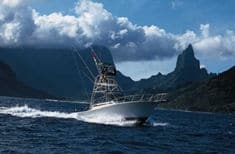
The choice of bottom paint can affect performance and economy, depending on how and where a boat is used. |
These special demands, especially for slime control, have recently been answered by paint manufacturers through the addition of a booster biocide, particularly irgarol, a biocide recently approved by the EPA. Interlux calls it Biolux, and it’s available as a dual biocide in the company’s top-of-the-line paints, both hard and ablative. Pettit includes the same chemical in its premium paints, and designates it with the SR – “slime resistant” – moniker. By any name, it’s an additional biocide that, when combined with the regular copper additive, increases bottom protection in especially demanding conditions – the kind that are likely to change over time in response to climatic change and nutrient runoff.
Booster biocides are state-of-the-art in the world of bottom paint, but another trend under development is the non-metal, non-stick surface – a paint so slick that nothing can grow on it. This approach is not yet commercially viable, as the products that have so far been developed require weekly wipe-downs, a type of maintenance that many find too demanding. But it’s an approach that is likely to be developed over the next few years, so we may want to keep an eye on it.
So, what’s the “bottom line?” Every once in a while it may pay to reconsider the paint you’ve been using. Runoff from that subdivision up the street from your marina might just be making the aquatic environment a lot friendlier for nasty underwater organisms, so you may need a boost in biocide. Or, if you’re running longer distances or putting on more hours each year, a different type of paint may just be more economical. Hey, an annual savings of ten percent in fuel costs wouldn’t be too hard to take!
| ¿ Micron Optima Antifouling Paint New from Interlux is a high-performance, polishing, two-part bottom paint that the company says is the strongest, cleanest antifoulant in the world. Formulated with new Activated Biolux anti-slime technology, the two-part packaging (you simply mix them together) allows the antifouling ingredients to combine more effectively at the time of application. Available in black, blue and red, it’s designed to last up to 18 months with no mid-season scrubbing necessary, is easy to apply, cleanup is with soap and water, and it has very little odor. For product information, contact Interlux Yacht Finishes, Union, New Jersey; (800) 468-7589; www.interlux.com. – Ed. |
| ¿ Micron Optima Antifouling Paint Interlux Yacht Finishes , (800) 468-7589 www.interlux.com ¿ Pettit Marine Paint, (800) 221-4466 www.pettitpaint.com ¿ U.S. Paint, (314) 621-0525 www.uspaint.com |






